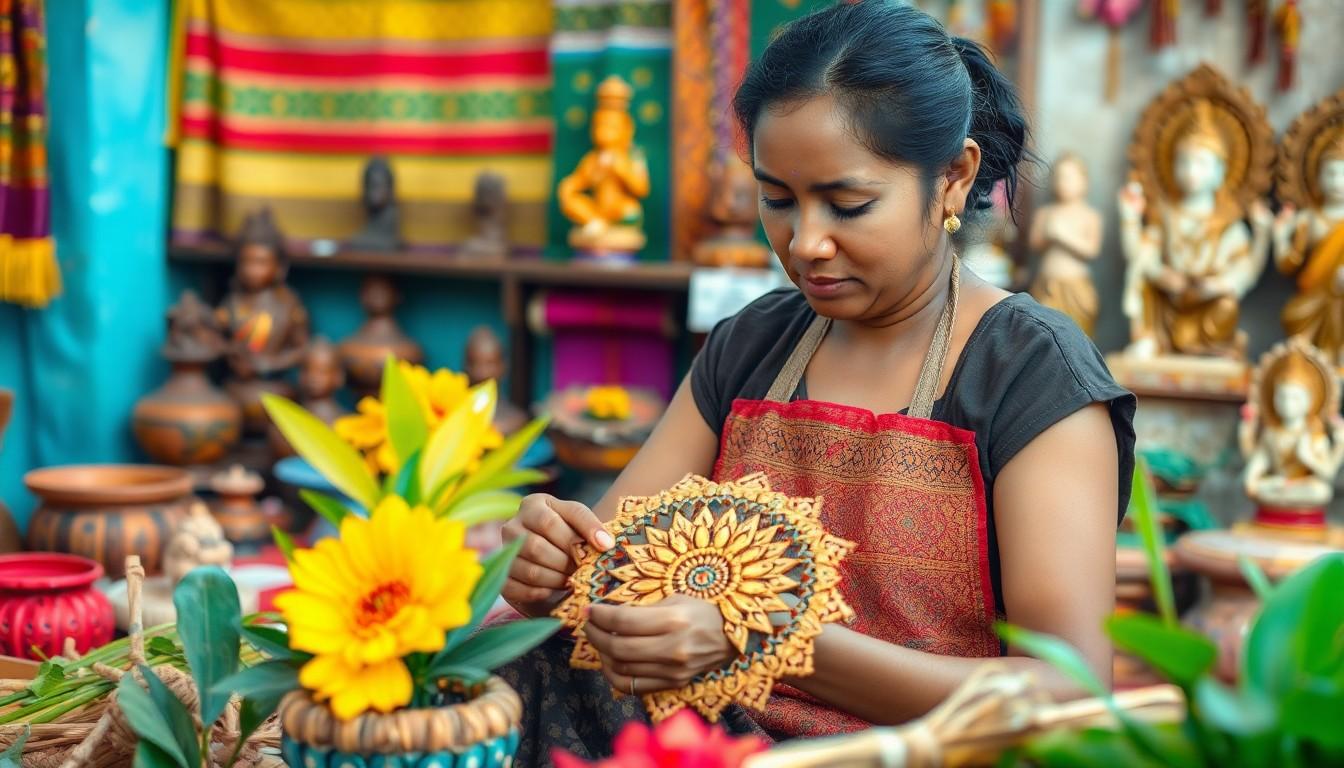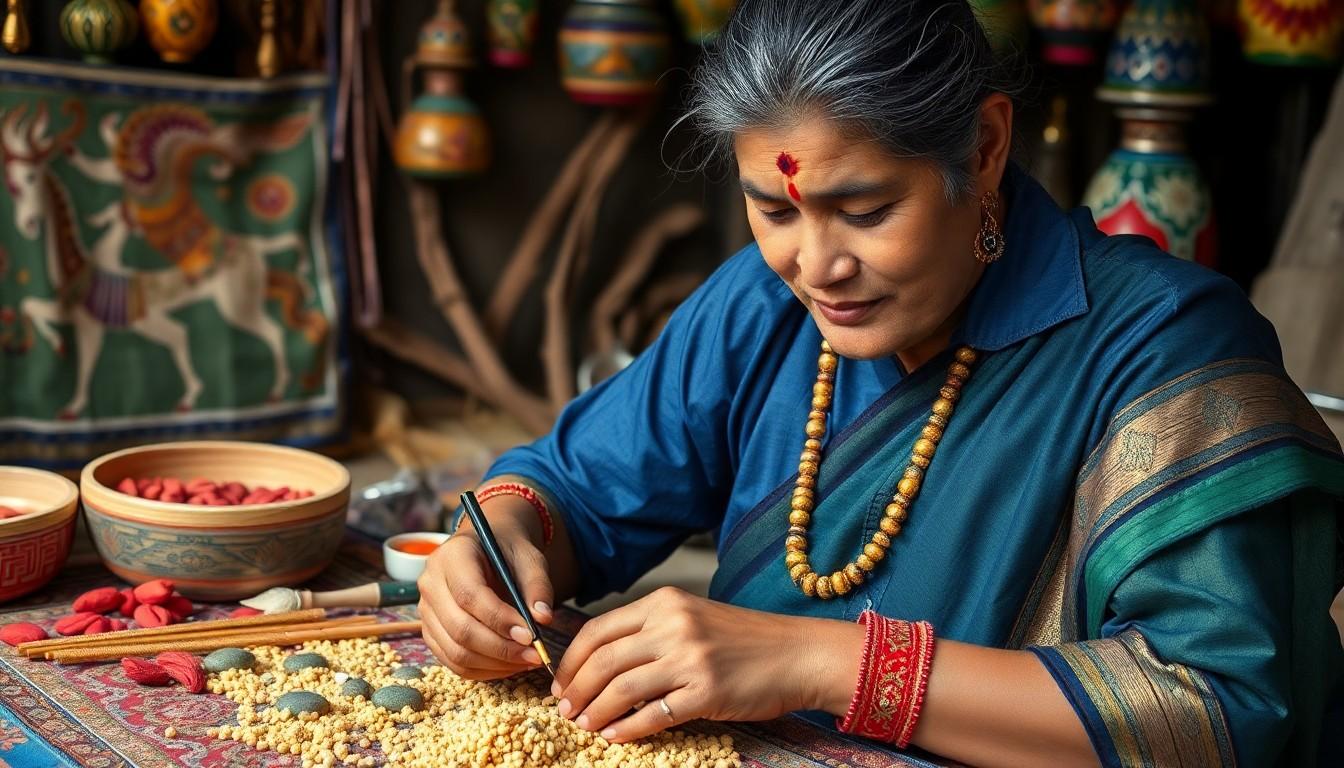The Best Fluffy Pancakes recipe you will fall in love with. Full of tips and tricks to help you make the best pancakes.

Kamaladhai: Discover the Cultural and Health Wonders of This Timeless Tradition
Kamaladhai isn’t just a word; it’s a treasure trove of culture and tradition waiting to be explored. Imagine a world where spirituality meets artistry, where every curve and color tells a story. This enchanting concept, rooted in ancient practices, has captivated hearts for generations.
What Is Kamaladhai?
Kamaladhai represents a unique cultural and spiritual concept deeply rooted in tradition. This term often refers to an artistic form, intertwining spirituality and craftsmanship. Practitioners transform natural elements into intricate designs that symbolize various aspects of life and devotion.
Artisans channel their creativity through different mediums, including sculpture, painting, and textiles. Each creation tells a story, often reflecting connections to nature, mythology, and historical narratives. Spiritual significance plays a key role, as many pieces aim to evoke feelings of peace and reverence.
Historically, Kamaladhai has evolved through generations, preserving ancient techniques while adapting to contemporary aesthetics. Community engagement is common, with artisans often collaborating to keep the tradition alive. Festivals and cultural events showcase these works, drawing crowds and fostering appreciation for the craft.
Regional variations exist within Kamaladhai, with styles reflecting unique local influences. From vibrant colors to symbolic motifs, each interpretation offers a fresh perspective on this rich heritage. Many find joy in collecting Kamaladhai pieces, which serve as reminders of their cultural identity.
Kamaladhai fosters a sense of belonging, connecting people through shared traditions and stories. It’s more than artistry; it’s a celebration of life and human expression, showcasing the beauty found within cultural narratives.
Historical Significance of Kamaladhai

Kamaladhai holds a profound place in cultural heritage, representing centuries of artistic expression and spiritual significance. This concept has transcended generations, creating a rich tapestry of history and community.
Cultural Context
Kamaladhai thrives within a cultural framework that emphasizes spirituality and artistry. Traditional practices are often tied to religious and seasonal festivals, where artisans showcase their skills. Craftsmanship interweaves with local beliefs, leading to unique interpretations that vary by region. Communities uplift this tradition, ensuring that the stories embedded in Kamaladhai continue to resonate with younger generations. The connection to nature is evident, with materials sourced locally and creatively transformed. This synergy fosters a deep appreciation for cultural identity and collective heritage.
Traditional Uses
Kamaladhai finds expression in various traditional uses, showcasing its versatility and relevance. Artisans create intricate designs for religious rituals, enhancing spiritual spaces. These artworks often serve as decorative pieces during festivals, infusing environments with cultural significance. Families pass down Kamaladhai pieces through generations, reinforcing bonds and preserving memories. The unique artistry captivates collectors, who appreciate the stories woven into each creation. Usage extends beyond aesthetics, offering a tangible link to ancestral traditions and spiritual beliefs.
Nutritional Benefits
Kamaladhai embodies a blend of artistic expression and nutritional value. Its components contribute significantly to overall health and well-being.
Key Nutrients
Kamaladhai encompasses various natural ingredients rich in essential nutrients. Vitamins play a pivotal role, particularly those from the B-complex group, which support metabolism and energy production. Minerals such as calcium and iron contribute to bone health and blood circulation. Antioxidants are present, offering protection against oxidative stress, while dietary fiber enhances digestive health. These nutrients provide a comprehensive profile that benefits individuals who incorporate Kamaladhai into their diets.
Health Advantages
Kamaladhai provides numerous health advantages beyond basic nutrition. Enhanced energy levels result from the B vitamins, promoting stamina throughout the day. Improved digestion occurs due to dietary fiber, which aids in regular bowel movements and overall gut health. Strengthened bones can stem from its calcium content, reducing the risk of osteoporosis. Antioxidants may boost the immune system, helping to ward off illnesses. Overall, Kamaladhai serves as a functional addition to diets, supporting holistic health and vitality.
How to Use Kamaladhai
Kamaladhai serves multiple purposes, making it a valuable asset in various contexts. Users can appreciate its versatility through different preparation methods and culinary applications.
Preparation Methods
Artisans prepare Kamaladhai using traditional techniques that highlight its cultural roots. Ingredients undergo careful selection, ensuring quality and authenticity. Individuals can incorporate grinding and blending processes to create a fine powder, enhancing its application in recipes. Steaming or boiling are common methods for infusing flavors and maximizing nutritional benefits. Ranging from simple preparations to intricate rituals, each approach preserves the essence of Kamaladhai. Local communities often share their unique preparation styles, reflecting regional differences while honoring the core values of this cultural symbol.
Culinary Applications
Culinary uses for Kamaladhai embrace its health benefits and rich flavors. It can feature in savory dishes, offering a unique twist to traditional recipes. Some prepare it as a flavorful ingredient in soups or stews, adding depth to the overall taste profile. Others opt for it as a seasoning for meats and vegetables, enhancing both aroma and nutrition. Its versatility also extends to desserts, where it contributes to unique sweet treats or health-conscious snacks. Families often integrate Kamaladhai into their meals, celebrating its cultural significance while promoting wellness and nourishment.
Conclusion
Kamaladhai stands as a testament to the rich tapestry of culture and tradition. Its unique blend of spirituality and artistry not only captivates the senses but also fosters connections among generations. Through intricate designs and meaningful stories, it continues to resonate deeply within communities.
The health benefits associated with Kamaladhai further enhance its significance, making it a valuable addition to modern diets. As artisans keep this tradition alive, the essence of Kamaladhai remains relevant, bridging the past with the present. Embracing Kamaladhai means celebrating a legacy of craftsmanship, spirituality, and well-being that enriches lives and nurtures the soul.
